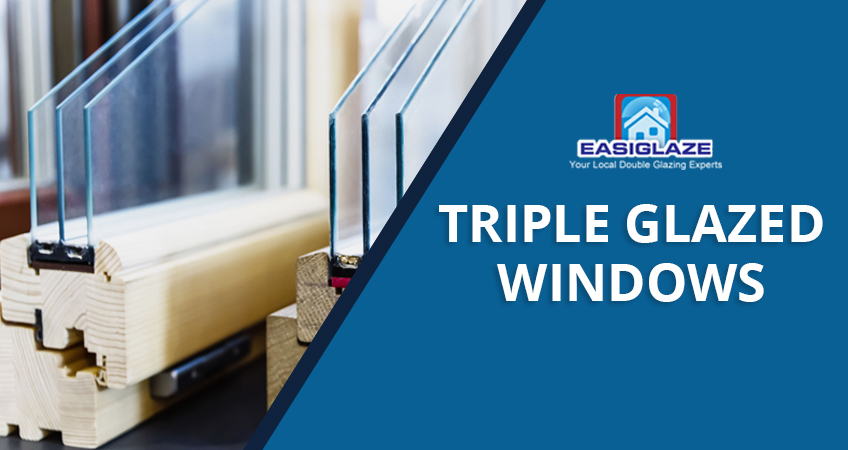Triple Glazed windows are increasingly becoming popular among windows suppliers, especially those who deal with aluminium. However, many modern homeowners still have concerns about using them.
If you are want to renovate your old home or are building a new one, you should consider using triple glazed windows. Not only do they have high thermal efficiency, but they also tremendously improve the aesthetic appeal of any building.
What is a Triple Glazed Window?
As the name implies, a triple glazed window comprises three layers of glass contained in a secure frame. There is an air pocket or inert gas contained in between each glass panel. An example of such inert gas is argon, which serves as an insulator for heat and noise. However, in some instances, a triple glazed window may contain two panes of glass with a low-emissivity.
Which is Better, Triple Glazing or Double Glazing?
The fastest and easiest way to compare the energy efficiency of these windows is to make use of the U-value measurement. U-value is the rate at which heat is transferred through a material, divided by the difference in temperature across the structure. This measurement is the same we use for roofs, walls, and floors.
Generally, a single glazed window has a U-value above 5. Previously, double glazed windows used to have a U-values above 3. However, building regulations now stipulate that all windows should possess a U-value that does not exceed 1.6. The Passivhaus Standard states that triple glazed windows should have a U-value not exceeding 0.8. Some suppliers, however, claim that the U-value of their windows is exactly 0.5.
Currently, the required U-value for walls is below 0.3. Therefore, windows are weak spots when considering the general thermal performance of a structure. For this reason, there is a lot of pressure to enhance their efficiency even more.
Some of the manufacturing improvements that have been achieved in glazing include:
- Introducing large cavities between two glass layers. 16mm has been set as the ideal distance;
- The addition of low-emissivity coatings to the glass to prevent heat from escaping;
- The filling of these cavities with inert gas, such as argon; and
- The designing of cold bridges, like aluminium spacers, which surround the glazing.
Advantages of Triple Glazing

The main benefits of triple glazing relate to comfort. When your house is thoroughly insulated, but you ignore glazing, there would be cold spots on your windows at night. These cold spots would cause draughts, eliminate heat, and end up in rivulets of condensation on the glass pane. Therefore, glazing ought to match insulation to retain warmth in the house. The advantages of triple glazing include:
- Fewer chances of condensation: Triple glazed windows have low U-values, which help to reduce internal condensation. They retain heat within the building and prevent the cold air from mixing with the warmth, which is what causes condensation. However, it is essential to note that the primary cause of condensation is high internal levels of humidity.
- Noise reduction and acoustic performance: Double glazing offers an acoustic performance within the range of Rw32. However, with some triple glazed windows, the range would be within the 40s.
- Improved thermal comfort level: Although some may argue that a double glazed window provides thermal comfort, we know for a fact that triple glazing is better. It retains more heat than double glazing. For instance, in a room with a temperature of 21oC, a modern double glazing window will retain up to 16oC while triple glazing,18oC.
- Rigidity and durability: Triple glazing is more sturdy and durable than double glazing.
- Increased security: The three glass panes form a thick layer which is harder for vandals to break.
Disadvantages of Triple Glazing

They include:
- Triple glazing can be quite costly;
- If they are not correctly installed, it may affect their performance;
- If they are not adequately supported, those with heavy frames can damage the walls.
What is the Cost of Triple Glazing?
For a long time, many people have perceived triple glazed windows to be almost twice the price of double glazed windows. However, in reality, they cost only about 25% to 30% more than double glazed windows. With Passivhaus designs, energy bills may be as low as 120 pounds per year, which is more than sufficient to recover the initial cost over time.
If you want to cut costs, you could install a combination of double and triple glazing in your building. Also, installing insulated hollow frames will improve the performance of the glazing, which will save you money in the long-run.
Can Triple Glazing Increase the Value of my Home?
More and more, there is mounting pressure to switch from double glazing to triple glazing. With the public being especially conscious about global warming and the government being deliberate about minimising carbon emissions, energy-efficient products are highly sought after. Therefore, the value of your house could increase with triple glazed windows for this reason.
Should I install Triple Glazed Windows?
There are many differing opinions on this subject. However, the answer to this question would depend on the climate of your region. In countries with colder climates like Norway and Sweden, triple glazing is highly recommended. In following the Passivhaus standard, which requires a U-value not exceeding 0.8, you would need to insulate the windows and the frames. Also, gas krypton instead of argon would be used. This is bound to be more expensive.
Therefore, in areas that are not so cold, triple glazing may not seem so necessary.
In conclusion
Installing triple glazed windows is a smart move regardless of the climate of your environment. It is definitely an addition you would not regret.

